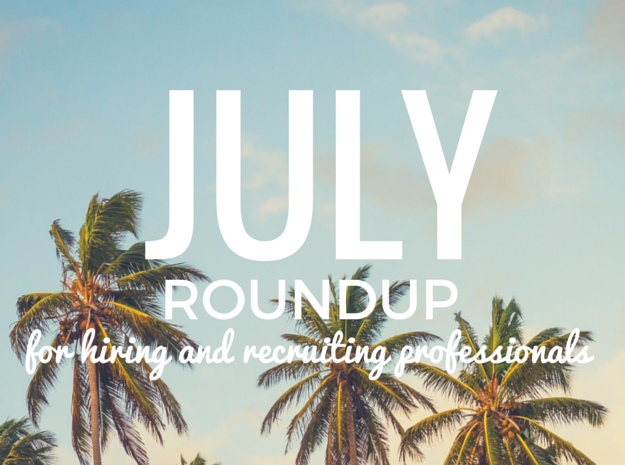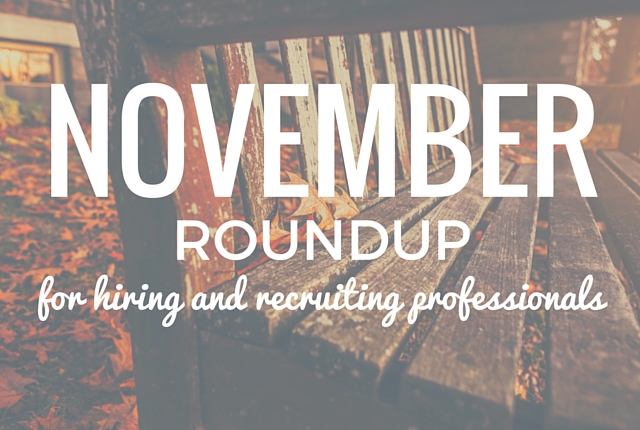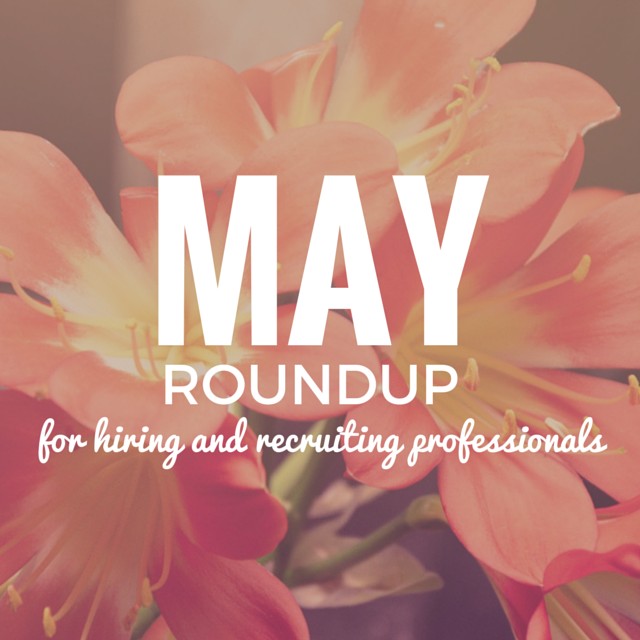Before the times of the telephone and Internet, the candidate experience during an interview and on the job was pretty bland and oftentimes overlooked. The way candidates felt during and after the interview wasn’t exactly seen as an important aspect of the recruiting and hiring process — and was rarely improved.
In many cases, this was because workers were basically born into a job, whereas now, candidates are actually looking closely at how they would fit in with a company and how they can grow into a better employee. In terms of employee retention, if you were “born into a job” workers would typically stay with the same job, as majority were family-run businesses passed down from generation to generation.
Fast forward to 1876 when the first telephone was invented and even further to 1969, when the Internet was born — these two major technological advances changed the entire talent acquisition space forever. Candidate experience is now a topic on every recruiter and hiring manager’s mind, so for this Spark Hire roundup, we’ve collected the top nine blog posts about how candidate experience and candidate behavior have evolved due to industry changes.
3 Important Shifts in Job Seeking Behavior
iCIMS published this insightful infographic which displays three trends candidates are looking for in a job search. These shifts in behavior are happening for many reasons, including a younger workforce looking to work for a purpose over a competitive salary, a shift across regions and industries, and passive candidates considering joining a talent pool.
- Company culture
- Talent demand
- Passive candidates
These three changes are important to note when creating a candidate experience that is pleasing to the job seeker market.
How to Make Company Culture Stick
Written by Sarah Lawson of Fast Company, this article reiterates the points iCIMS makes in their infographic. Modern job seekers are looking for more than just a paycheck — they are looking to join an organization with great vibes, benefits, and opportunities for growth.
According to InMobi’s CEO, Naveen Tewari, there are three ways to continue success while still maintaining the startup feel and to keep the employment experience positive: Throw out traditional metrics of success, make culture stick, and open-source your success. For those reasons, it is important for an organization to develop an attractive work life.
7 Ways to Create a Top-of-the-Line Candidate Experience
These seven hiring professionals are going out of their way to create top-of-the-line and positive candidate experiences, in very creative ways. Starting with the job description — try making your job posting stand out from the rest by using engaging verbiage, humor, and, ummm, did I just read “timed Nerf Gun courses”? Yeah. I did.
By creating a better overall candidate experience, organizations can expect longer employee retention and referrals, even if they don’t hire the candidate! If employees have negative experiences even before day one (AKA in the interview), this might lead to a lack of engagement on the job and even worse, bad reviews or even a drop in sales. We’ve all seen the horror stories of negative Glassdoor reviews — don’t be that company!
The 4 Things You Need to Know for a Better Candidate Experience
Published on Undercover Recruiter, this article explores four things to know in order to create a better overall candidate experience.
- Candidates are frustrated with the application process
- Ongoing communication is important to candidates
- You’re missing opportunities to connect with candidates
- Having a strong employer brand is crucial
With knowledge of these four insights, recruiters and hiring managers can reduce the risk of leaving candidates with a bad impression of the company’s hiring process. After all, 69 percent of job seekers say they are less likely to buy from a company if they had a bad interviewing experience.
Improve Employee Retention From Day 1
Employee retention happens even before a candidate is hired — in fact, the success of your interview and the overall candidates experience from day one of the recruiting process has a lot to do with it.
- Discuss you candidate’s motivations during the recruiting process
- Build a strong onboarding process
- Encourage regular communication
A great tip mentioned in this article is the importance of HR staying in touch with each new hire. By checking in periodically throughout the first few months can really help the candidate’s comfort level in the office and new role.
Engagement and Retention: One Doesn’t Always Lead To The Other
In this article, Cord Himelstein of Michael C. Fina explains the strange relationship between retention and engagement. To say the least, it’s even trickier than Kourtney Kardashian and Scott Disick’s relationship — YES, I WENT THERE!
So how can we ensure even the most highly engaged employees don’t leave us high and dry? Simply put, we can’t. Even those who appear to be committed to the company will take an opportunity elsewhere if the offer is charming enough. The thing is, you cannot dwell on employees leaving for another opportunity, fore they may like to keep the relationship with the company strong by freelancing, or perhaps in the example given in the article, become a partner further down the road.
Daily engagement with your employees may help reduce turnover, but cannot eradicate it — and that’s ok. As long as your organization takes the steps to review and improve the reasons employees leave, hiring managers can really help with the overall employee relationships.
Consequences of Hiring the Wrong Employee & Tips for Making a Better Hire
Posted to the AkkenCloud blog, this infographic details how an organization’s culture depends on values and people. When assessing a potential hire, it is important to imagine their role within the established culture, and be careful when hiring for skill over core personality — this could be a crucial mistake! By hiring the wrong employees the company is negatively affected in many ways.
4 Things to Know About Employee Happiness (And Why It’s Important)
Published on ERE Media’s TLNT blog, this article provides some staggering stats about employee satisfaction that every recruiter and hiring professional MUST KNOW.
- 61 percent of employees thought about searching for a new job in the past year
- A quarter of those who received a pay raise say it did not improve their motivation
- Nearly two-thirds of employees work at organizations that lack a strong work culture
- Half of all employees are dissatisfied with their direct supervisors
These are some serious findings, don’t you think? What’s more important than these stats is the four solutions to these employment happiness issues found in this article.
4 Facts about Employee Engagement from an Un-Uber Ride-Sharing Company
Even though this post was published a day before July, it’s so incredibly on-point with our July theme so I had to add it! Many of us know about the rideshare service, Uber — if you haven’t taken an Uber before, you’ve most likely heard about the San Francisco “tech company NOT transportation company” in the news lately.
Well, forget Uber because this article describes a different rideshare company called Chariot. I’ve got to be honest, I hadn’t heard of Chariot before reading this Jazz article. What they do differently than Uber is instead of contracting out their driver, Chariot drivers are actually hired as Chariot employees with perks and benefits. By creating a positive and more involved work experience, employees take pride in their work, stay employed longer, while adding tremendous value and loyalty to the company.
—
If you found this roundup helpful, get your daily dosage of talent acquisition-rich content by subscribing to the Spark Hire newsletter and be sure to follow us on Twitter and Facebook. Feel free to suggest content to be highlighted in the August roundup by commenting below.









